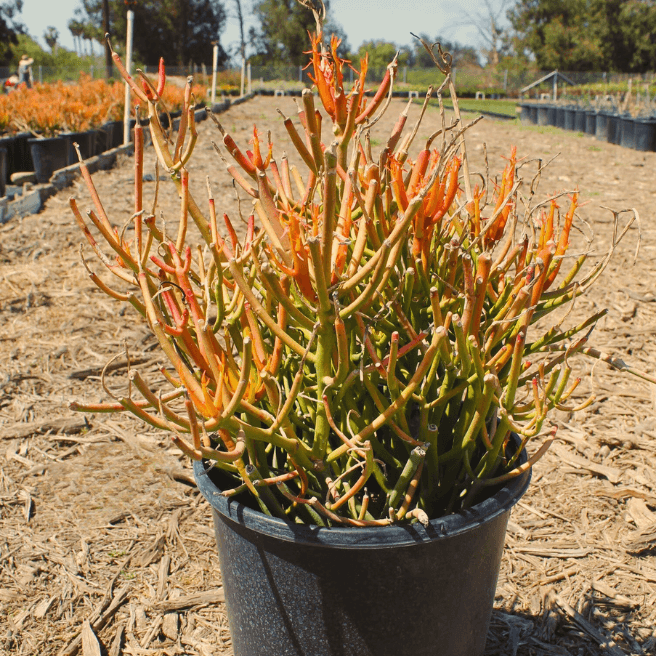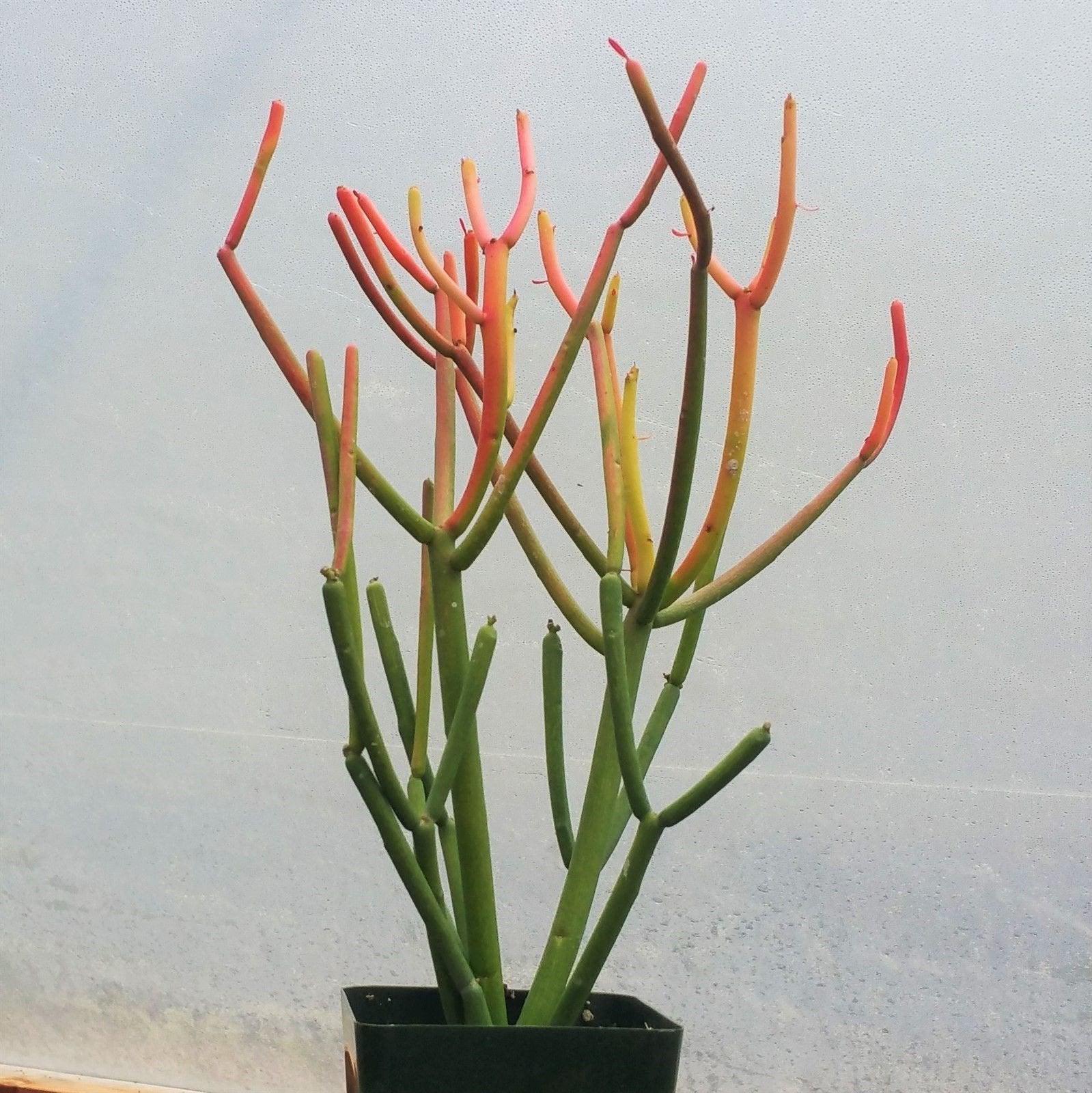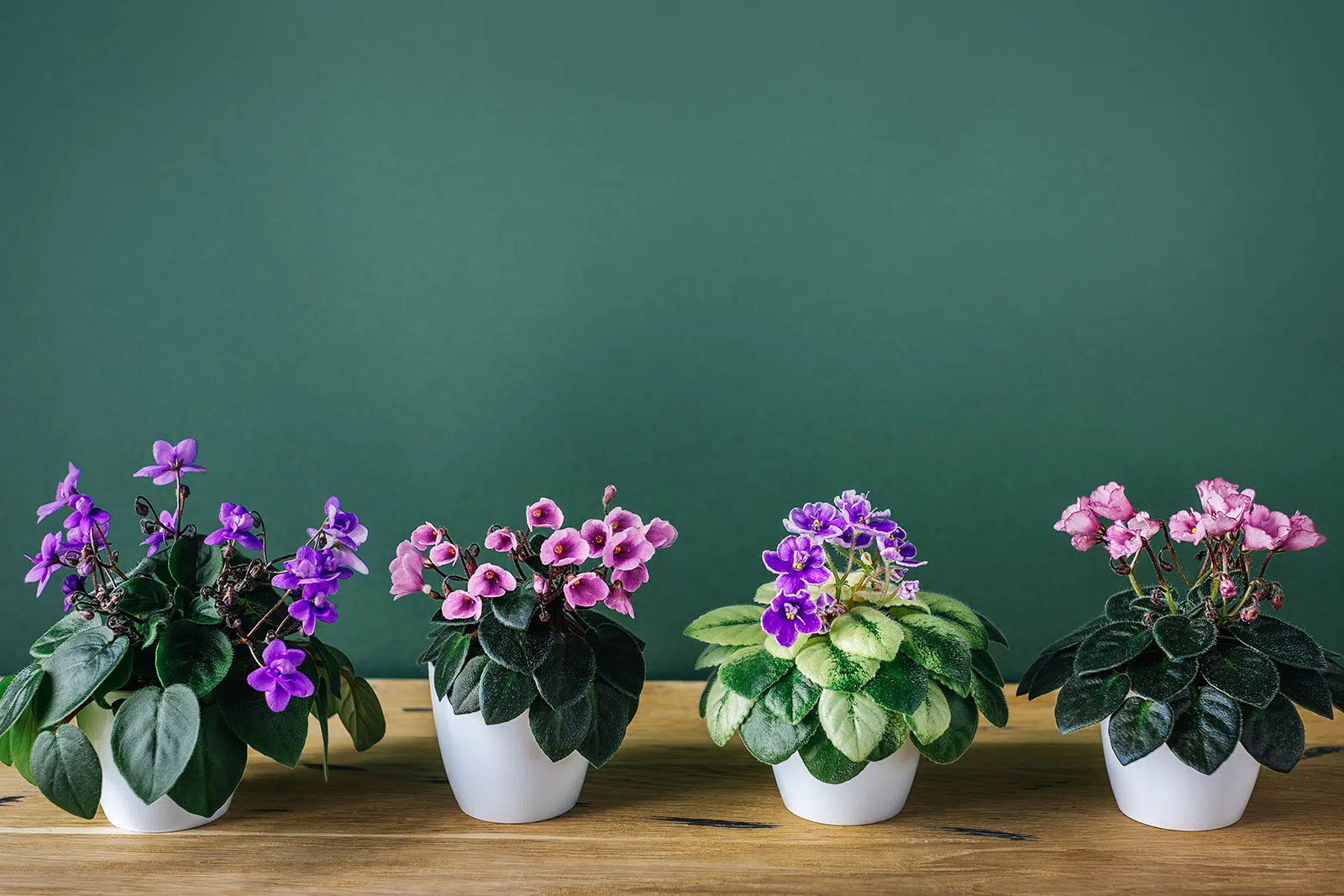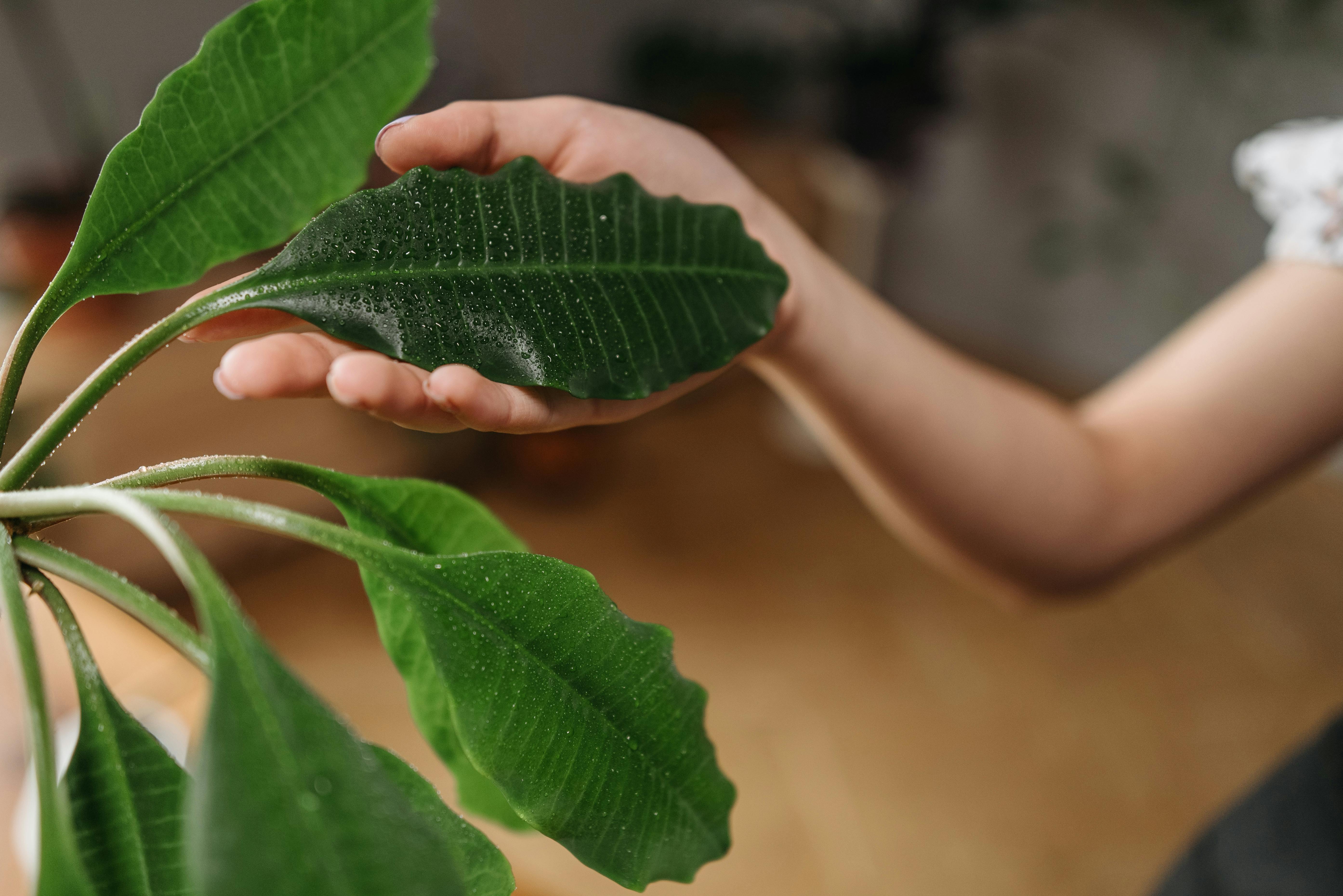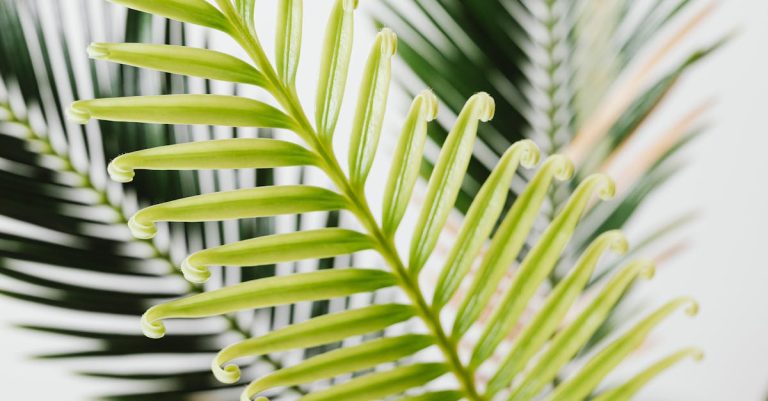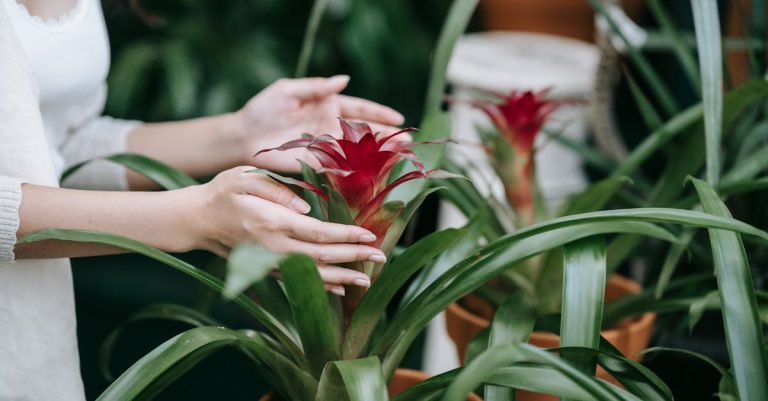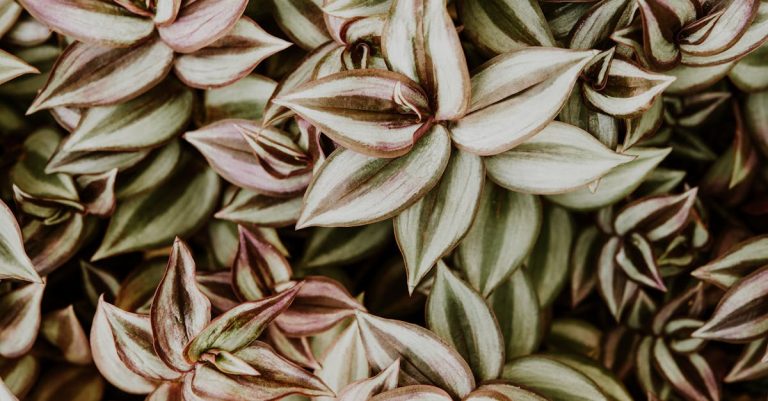How To Care For Pencil Cactus (Euphorbia tirucalli)
How to Care for a Pencil Cactus (Euphorbia tirucalli): A Detailed Guide
The Pencil Cactus (Euphorbia tirucalli), also known as the “Sticks on Fire” plant, is a unique and eye-catching succulent known for its slender, green, pencil-like stems. It’s a hardy plant that can thrive in various conditions, making it a great choice for both indoor and outdoor gardens. Here’s a comprehensive guide to help you care for your Pencil Cactus and keep it thriving.
1. Light Requirements
Pencil Cactus thrives in bright light and can handle direct sunlight. For indoor plants, place them near a south or west-facing window where they can receive several hours of direct sunlight each day. Outdoors, they should be planted in a sunny spot. Insufficient light can cause the plant to become leggy and lose its vibrant color.
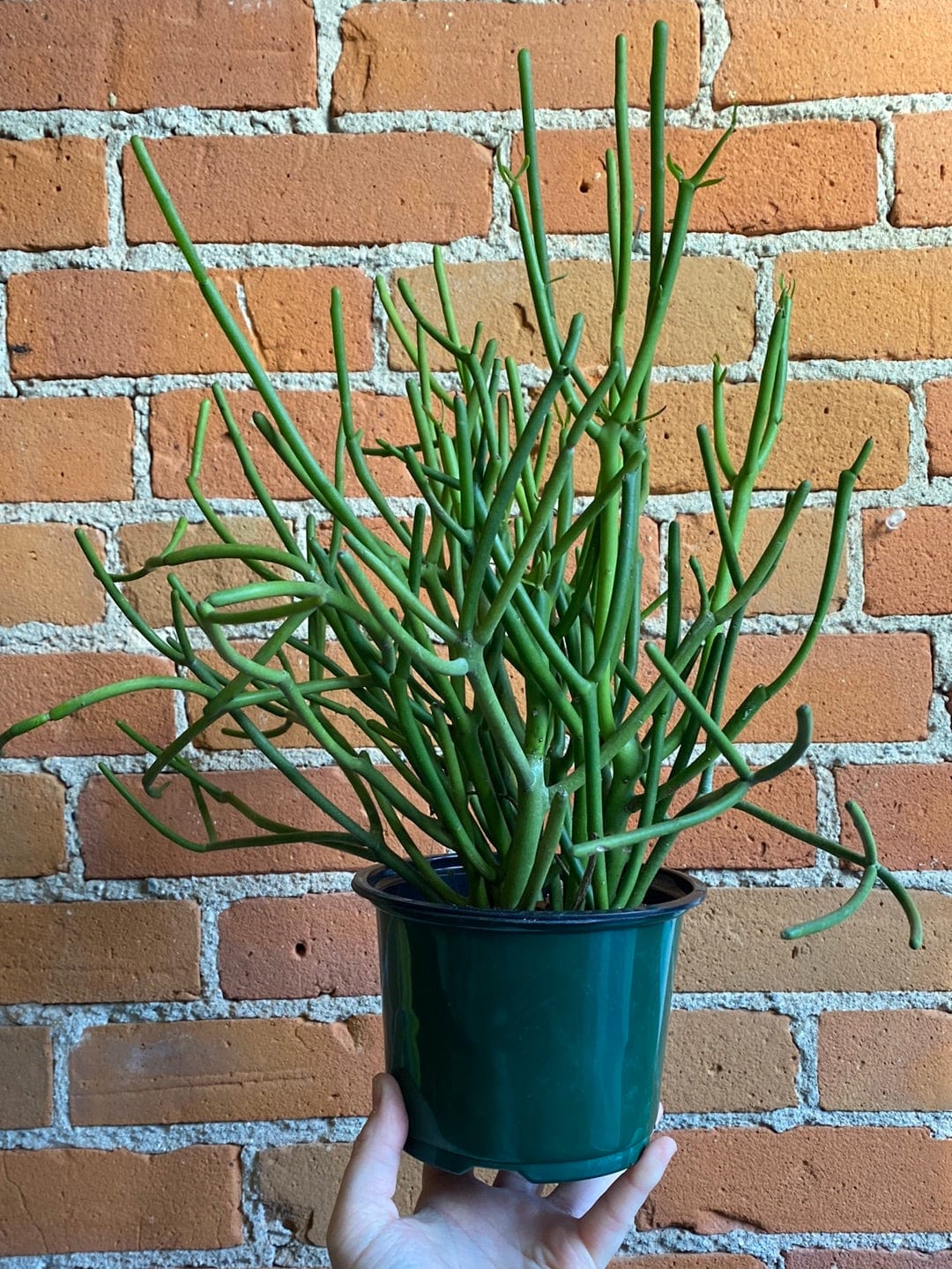
2. Watering
As a succulent, Pencil Cactus requires minimal watering and is drought-tolerant. Water the plant thoroughly, allowing the soil to dry out completely between waterings. Overwatering can lead to root rot. During the winter months, reduce watering frequency as the plant’s growth slows. A good rule of thumb is to water every 2-3 weeks during the growing season and less often in winter.
3. Humidity
Pencil Cactus prefers low humidity environments typical of most indoor settings. High humidity is not necessary and can sometimes cause problems like fungal growth. Good air circulation helps keep the plant healthy and reduces the risk of disease.
4. Temperature
This plant prefers warm temperatures between 65-75°F (18-24°C) but can tolerate temperatures as high as 90°F (32°C). It is not frost-tolerant and should be protected from temperatures below 50°F (10°C). If you live in a colder climate, bring the plant indoors during the winter.
5. Soil and Potting
Pencil Cactus requires well-draining soil. Use a cactus or succulent potting mix, or make your own by mixing regular potting soil with sand or perlite. The pot should have drainage holes to prevent water from accumulating at the bottom. Repotting should be done every 2-3 years or when the plant becomes root-bound, ideally in the spring.
6. Fertilizing
Fertilize your Pencil Cactus sparingly. Use a balanced, water-soluble fertilizer diluted to half strength once during the growing season (spring and summer). Avoid fertilizing in the fall and winter when the plant’s growth slows. Over-fertilization can lead to leggy growth and weak stems.
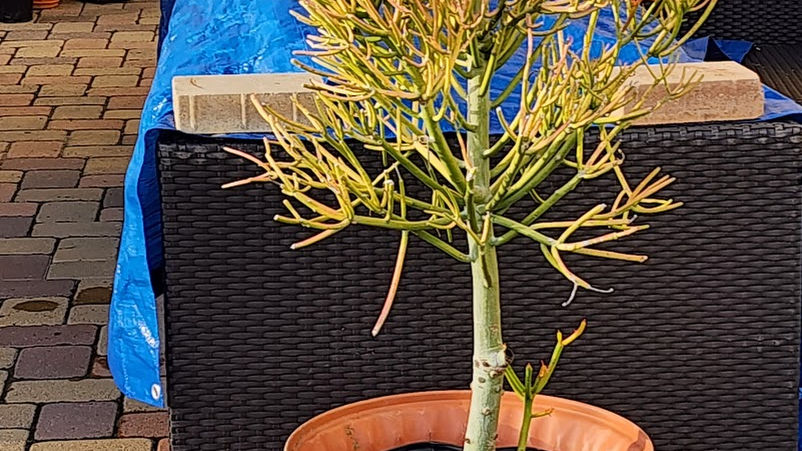
7. Pruning
Pruning helps maintain the shape and encourages healthier growth. Use clean, sharp scissors or pruning shears to trim back any overgrown or leggy stems. Be cautious as the plant’s milky sap is toxic and can cause skin irritation. Always wear gloves and wash your hands thoroughly after handling the plant.
8. Propagation
Pencil Cactus can be propagated through stem cuttings. Cut a healthy stem with several segments, let it dry for a day or two to form a callus, and then plant it in a well-draining soil mix. Water sparingly until roots develop. Always wear gloves and handle with care due to the toxic sap.
9. Pest and Disease Management
Pencil Cactus is relatively pest-resistant but can occasionally be affected by pests such as mealybugs and spider mites. Regularly inspect the plant for signs of pests, such as webbing, sticky residue, or visible insects. Treat infestations with insecticidal soap, neem oil, or by wiping the stems with a damp cloth. Ensure proper watering and good air circulation to prevent fungal and bacterial diseases.
10. Special Considerations
- Toxicity: Pencil Cactus contains a toxic latex sap that can cause skin irritation and is harmful if ingested. Keep it out of reach of children and pets. Always wear gloves when handling the plant and avoid touching your face or eyes.
- Handling: Due to the plant’s toxic sap, handle it with care. If you get sap on your skin, wash it off immediately with soap and water. If you get sap in your eyes, seek medical attention promptly.
Conclusion
Pencil Cactus, with its distinctive and architectural appearance, can be a striking addition to any plant collection. By providing the right light, soil, and watering conditions, you can enjoy this low-maintenance succulent for many years. Regular maintenance, including proper watering, occasional fertilizing, and pruning, will ensure your Pencil Cactus remains healthy and vibrant. Whether you are a seasoned gardener or a beginner, this plant offers a rewarding and visually captivating care experience.
Conclusion
In conclusion, caring for a Pencil Cactus (Euphorbia tirucalli) requires minimal effort but specific attention to its unique needs. Keeping the plant in a well-draining soil mixture, providing adequate sunlight exposure, and watering sparingly will ensure its health and growth. It is crucial to handle this plant with caution due to its toxic sap, which can cause skin irritation and other adverse effects if not properly managed. Regular monitoring for pests and diseases, along with occasional pruning to maintain its shape, are essential tasks to keep the Pencil Cactus thriving in an indoor or outdoor setting. By following these care guidelines, even beginner gardeners can enjoy the beauty and resilience of this striking succulent in their homes or gardens.
Overall, the Pencil Cactus is a low-maintenance plant that can add a touch of elegance to any space with its slender, pencil-like branches and vibrant green leaves. With its air-purifying qualities and unique appearance, this succulent is a fantastic addition to any plant collection. By understanding and meeting its specific care requirements, anyone can successfully cultivate and enjoy the beauty of the Pencil Cactus in their living environment.
